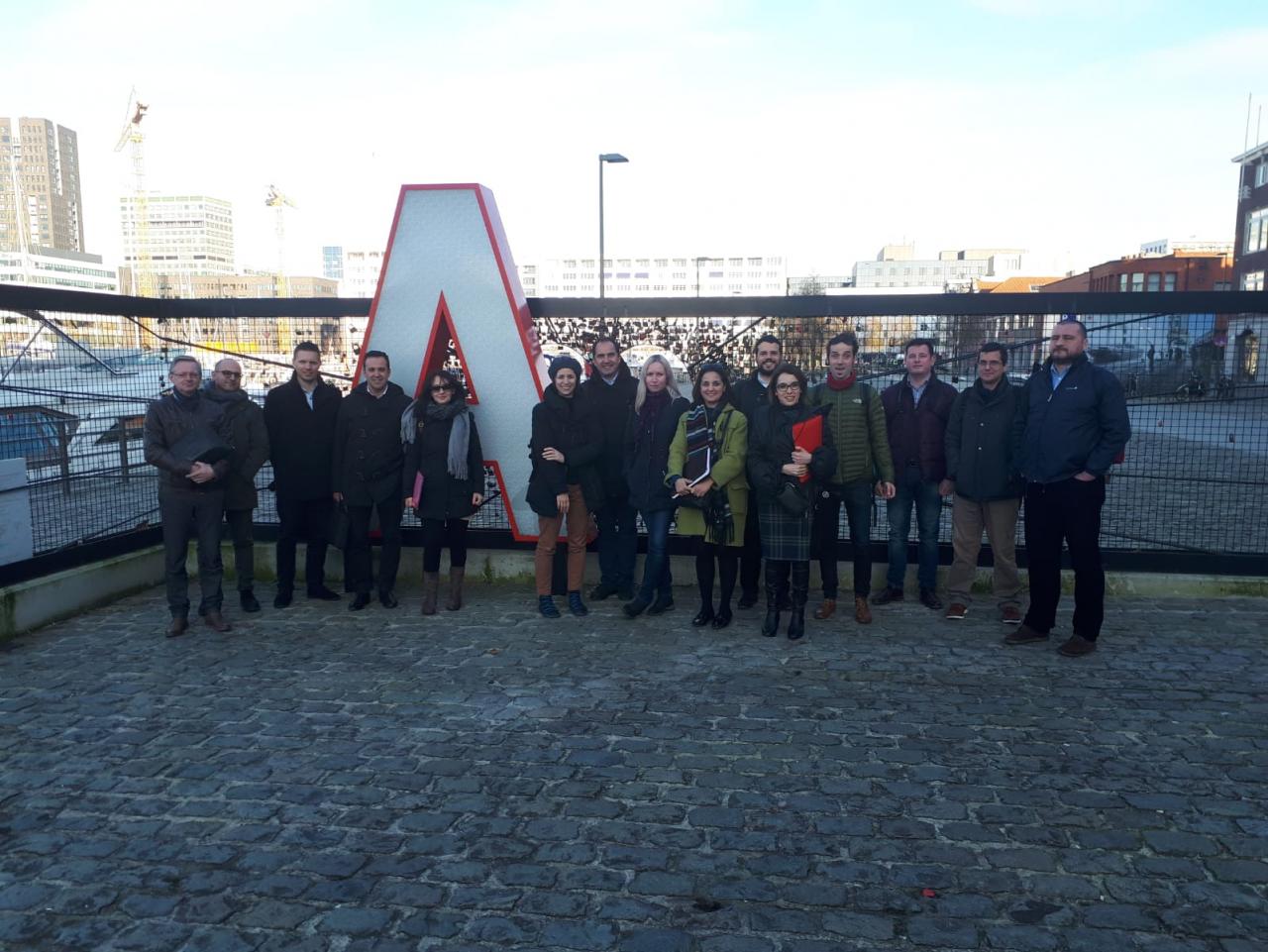
On the 20th and 21st of February, CARD4ALL cities met officially as project partners of the Transfer Network Phase 2.
Some new faces joined our project and everyone was excited about working together. The meeting took place in a beautiful room in the municipal archive of Antwerp, a renovated old warehouse which is a great example of urban regeneration.
After an inspiring session about the innovation strategy of our host, Antwerp city, we had the chance to get to know the A-kaart in detail. This card has been running for 10 years but its approach is different from Gijón Citizen Card’s, which is very enriching for the project.
The next point was to debrief the application form highlighting the main project milestones and the transferability study that are the basis of our journey during the Phase 2.
The sun was shinning so it was the perfect moment to experience the use of the A-Kaart thanks to our colleagues from Antwerp. We went out for a walk around the neighbourhood and we learnt about waste management and the loyalty card.
The afternoon session of the first day was focused on going deeper in the Transfer Plans. Three groups of cities were organized in order to work on the project vision in a time scale of 3 years. The Lead Expert provided a fictional scenario for each city to trigger off a discussion and the cities worked out their own vision. We also used the Canva methodology to identify the key issues related to where we are, how to get here and how far we want to go.
At the end of the session, we produced a new template for the Transfer Plans that suits better our project idiosyncrasy.
We finished the first day with a very interesting walk throughout the city, discovering the history of Antwerp which is also part of the intercultural exchange.
Next day, we started with a working session on project administration followed by a very interesting presentation to introduce Card4all network into blockchain technology and its potential that can have many practical applications in cities.
After a brainstorm about potential members for the URBACT Local groups that helped us to identify the key stakeholders and find ideas to engage new ones, we worked on how to link local activities and international activities.
We finished our meeting positioning each city in relation to the Good Practice and filling out our transfer action tables.
There are still a lot of things to do, but we had two fruitful days in Antwerp, full of good ideas, resolutions and also some Belgian beer tasting.
